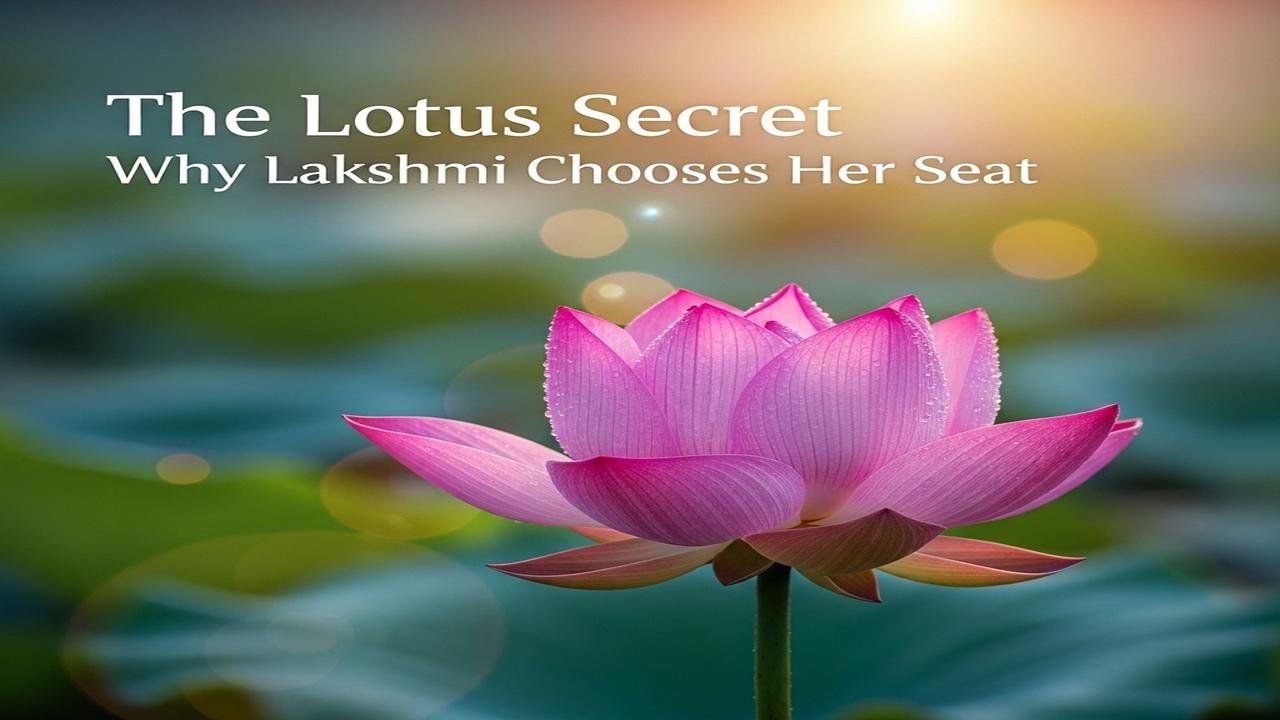The Lotus Secret, Why Lakshmi Chooses Her Seat

The secret behind the lotus as Goddess Lakshmi’s seat
There is a quiet image that lives in many Indian homes: a gentle goddess, seated on a perfect lotus, showering blessings of wealth and grace. When I was a child, my grandmother would bring a small clay lamp and a lotus blossom to the family altar, and tell us why that simple flower is more than decoration. That memory holds the secret of why the lotus is Lakshmi’s eternal seat.
The lotus grows in mud but blooms untouched by it. This visible miracle is the first lesson. Like the flower, Lakshmi represents beauty, purity, and abundance arising from life’s messy realities. The lotus teaches that one can live in the world — face difficulties, perform duties, and yet remain spiritually clean. This is an everyday kind of holiness that families honor when they worship Lakshmi during festivals like Diwali or on Fridays at home.
There is also a deep story from our sacred tales. The Padma Purana and other scriptures describe Lakshmi emerging during the great churning of the ocean. She rose amid waves, radiant and serene, often shown seated on a lotus. In that scene the lotus becomes a symbol of birth — not just biological birth but the birth of goodness, order, and prosperity after effort and struggle.
Look at temple sculptures and coins from ancient India, and you will find the lotus everywhere. It is not mere ornament. The flower connects Lakshmi to creation and sustenance. In the Vishnu-Lakshmi relationship, the lotus appears at Vishnu’s navel, giving rise to the creator Brahma. So the lotus is a bridge: it links preservation, creation, and the flow of blessings.
There are simple, living practices that carry this symbolism into daily life:
- Offering a lotus: Devotees offer fresh lotuses to invite Lakshmi’s presence. The act is a prayer for purity and grace, not only material wealth.
- Keeping a clean home: Much like the lotus above the water, a clean and calm house is seen as a fitting place for Lakshmi to dwell.
- Lotus motifs: From rangoli designs to textiles and jewellery, using the lotus reminds us to seek inner worth alongside outward success.
In yoga and spiritual practice, the lotus appears again. The seated posture called Padmasana is named for the flower; it helps one sit steady and open, like a lotus lifting toward the sun. This physical image mirrors Lakshmi’s teaching: steady practice and a calm mind attract wholesome abundance. Spiritual wealth — kindness, contentment, and courage — is as important as material prosperity.
The lotus also speaks to balance. Lakshmi is not greed; she is the right use of wealth for dharma, family welfare, and generosity. The lotus, with its many petals, can remind us to nurture different parts of life: home, work, community, and inner growth. When we honor the flower, we commit to using resources wisely and compassionately.
Over time, the lotus has been woven into festivals, arts, and daily customs. During Diwali, placing a clay lamp near a lotus painting or offering an actual lotus is a way of inviting light, hope, and steady fortune into one’s life. In modern homes, people keep small lotus bowls, prints, or coins, not merely as luck charms but as reminders to live with dignity and openness.
Conclusion
The lotus is Lakshmi’s seat because it holds the story we all need: beauty born from struggle, purity without isolation, and prosperity tied to purpose. Next time you see a lotus, pause a moment. Let it remind you that true wealth blooms when heart, home, and effort come together. May that gentle image inspire you to live with grace and share your abundance kindly.
